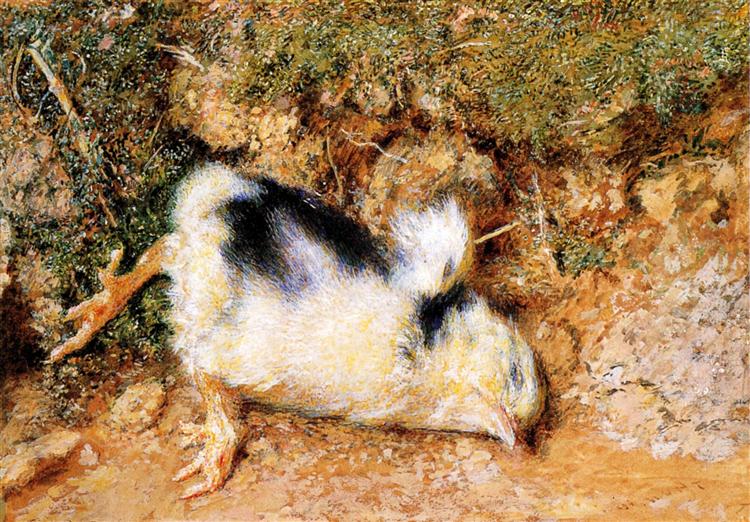Beschreibung
William Holman Hunt, one of the central figures of the Pre-Raphaelite movement, achieves in "The Dead Girl of John Ruskin" a work rich in symbolism and aesthetics, which reflects both the sensitivity and the meticulous technique that characterize his artistic production. This painting, executed in 1854, is situated within a framework of narrative and technical innovations that defined Victorian art, where Hunt sought to portray reality in an almost photographic way, a hallmark of Pre-Raphaelitism.
In the work, the figure of a young woman is shown lying in a natural setting, surrounded by a series of elements that accentuate her fragility and the ephemeral nature of life. The lifeless woman seems to be depicted in astonishing detail, from the delicacy of her face to the posture that evokes a palpable sadness. The facial features are carefully worked, and her dark hair contrasts with the lighter background. This setting reflects Hunt's devotion to the direct observation of nature, a recurring characteristic of the works of the Pre-Raphaelites, who avoided idealization and opted for honest representation.
The choice of setting also deserves attention. The young girl is surrounded by a rich landscape that stands out for its vibrant colors. The flora features a bright green hue that contrasts with the more muted color of the girl’s clothing, heightening the sense of solitude and stillness. Hunt uses a rich palette, manifest in the nuances of greens and subtle touches of lighting, evoking a sense of melancholic serenity. Each plant leaf and petal in the background seems to come to life, adding depth to the painting’s visual narrative.
Beyond its composition and use of color, the symbolic aspect of “John Ruskin’s Dead Girl” is also significant. The title itself alludes to John Ruskin, the art critic and proponent of the Pre-Raphaelite movement, who held a romantic view of life and art, suggesting that the work can be interpreted as a commentary on the vulnerability of life and inevitable mortality. This highly visceral theme resonates with the viewer, opening up a dialogue about life and death. Hunt, known for his attention to symbolism, allows the disembodied young girl to become an emblem of a larger tragedy.
Although the painting may appear simple at first glance, the technical and emotional complexity of the work reveals layers of meaning that unfold with each observation. This is a key characteristic of Pre-Raphaelitism: the invitation to contemplate and reflect beyond the immediate. Hunt, along with other Pre-Raphaelites, questioned and challenged the aesthetic conventions of his time, and John Ruskin's Dead Girl is a vivid testament to this dialogue.
Hunt's legacy is found not only in the Victorian context, but also resonates in later art movements that value symbolism and raw emotion in the depiction of the human being. The work endures as an example of the technical mastery and deep emotional resonance that Pre-Raphaelitism achieved, inviting viewers into an introspective and contemplative experience. Ultimately, "John Ruskin's Dead Girl" establishes itself as a symbol of the endless explorations about life, death and art that continue to captivate contemporary audiences.
KUADROS ©, a famous painting on your wall.
Hand-made oil painting reproductions, with the quality of professional artists and the distinctive seal of KUADROS ©.
Painting reproduction service with satisfaction guarantee. If you are not completely satisfied with the replica of your painting, we will refund 100% of your money.

